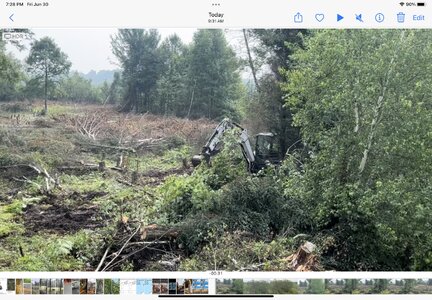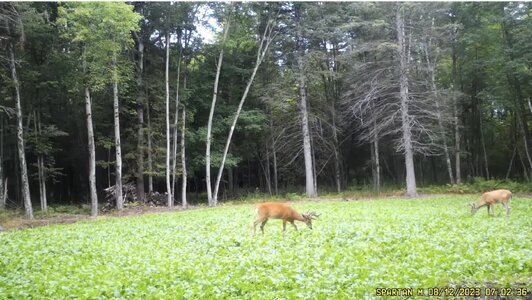Thanks for the informative response. I’ve got winter rye I’m going to spread in any parts of the plot the brassicas don’t do well. The areas closer to the swamp definitely have the best soil. The only tillage I did was scratching the surface with the short tines of my chain harrow. We go to Florida in December for the winter, getting back in May. I know frost seeding is done during the winter, but maybe I should spread clover seed in December?
Keep in mind that certain plants complement each other. When we plant a monoculture, or even a mix of plants from the same family like brassica, they all want the same nutrients from the soil. So, planting a semi-monoculture of all brassica and then planting WR in spots where they don't do well is different. One thing missing from your description is location. The timing of planting is related to it.
I'm in zone 7A on heavy clay soils with low pH and moderate fertility. Here is how I typically deal with a new plot:
The first thing I do is lime as per soil test. I don't use any commercial fertilizer any more. That significantly cuts cost and deer use my plots just as much if not more than when I did traditional tillage and used commercial fertilizer.
If I start in the spring, I'll plant a mix of buckwheat and sunn hemp. Both germinate quickly and compete well against weeds and do well on infertile soil. Sunn hemp is a legume that fixes N into the soil. Buckwheat is sometimes called "green manure" because it scavenges nutrients and desiccates quickly releasing them for the next crop.
In the first fall, about September, I'll plant a mix of WR and perennial clover. Durana works well in my area. I'll maintain that as a clover plot for many years. The first spring, I'll mow back the WR each time it gets 12"-18" tall back to 6"- 8". This slowly releases the Durana. After that, each year, I'll mow only once in the fall just before our October archery season. You would not even think it was a food plot in the summer. It is covered by all kinds of weed, many of which are great deer food. When the cool nights and rain of all come around after my mowing, the clover takes off and dominates the field. Each year, there is a slightly higher percentage of weeds in the fall. They are attracted to the N that is fixed by the clover. Eventually it is time to rotate.
When I rotate, I'll plant buckwheat in the spring (early June here). Then in the fall, I'll plant a mix of 100 lbs/ac WR, 10 lbs/ac of Crimson Clover (an annual clover that acts as a reseeding annual in my area), 2 lbs/ac of PTT, and 3 lbs/ac of GHR.
I've got two options for the next summer. I can go back to the buckwheat/sunn hemp mix, or I can simply let the WR head out. The crimson clover becomes the food source for spring and early summer. There is some use of the WR heads by deer during the summer as well.
Because it is a mix rather than a monoculture or semi-monoculture of similar plants, I can repeat this cycle over and over.
I'm not suggesting this is the best fit for you. You will need to match the plants and the timing to your location.. I'm just trying to give you and example of how mixing complementary plants can be done.
 AC3E7833-6626-43A2-B5B6-D36F3280F23D.jpeg1 MB · Views: 54
AC3E7833-6626-43A2-B5B6-D36F3280F23D.jpeg1 MB · Views: 54 9671E165-8CDB-4364-B0A8-4A08DBEF0005.jpeg5 MB · Views: 44
9671E165-8CDB-4364-B0A8-4A08DBEF0005.jpeg5 MB · Views: 44 770C6A93-1305-41B1-A9AB-7B863045422A.jpeg8 MB · Views: 42
770C6A93-1305-41B1-A9AB-7B863045422A.jpeg8 MB · Views: 42 2116363A-7AC6-4369-85C9-6F9CB199DF37.jpeg4.1 MB · Views: 41
2116363A-7AC6-4369-85C9-6F9CB199DF37.jpeg4.1 MB · Views: 41 DAF21B5C-E158-49DE-A2D9-B2E36C88768A.jpeg996.5 KB · Views: 41
DAF21B5C-E158-49DE-A2D9-B2E36C88768A.jpeg996.5 KB · Views: 41







